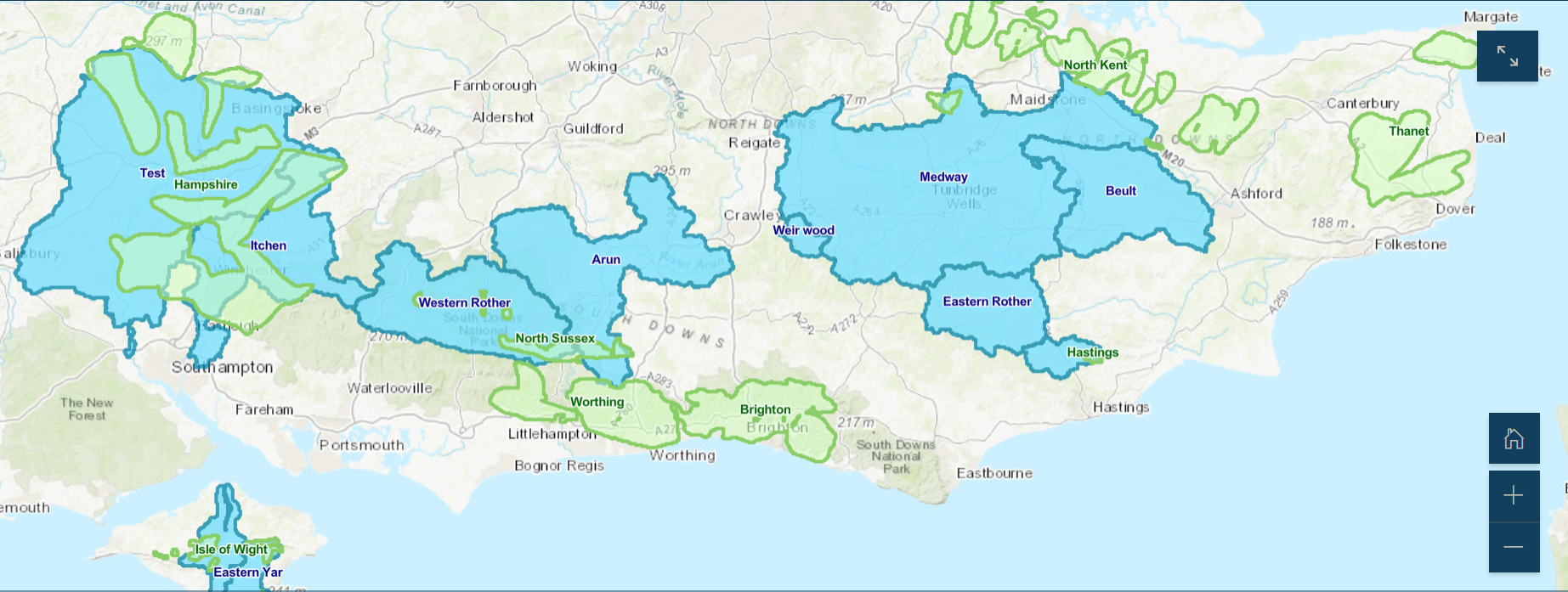Our current catchment work
We are currently working across Hampshire, the Isle of Wight, Sussex and Kent.
Where we work

Our team is working to understand the risks to drinking water in our catchments and identify the best ways to manage them.
Knowing the problem
One of our major tasks is understanding our catchments so we know what is happening near our drinking water abstraction points and can identify any risks to water quality. To do this, we are:
- investing over £1 million in water quality sampling to extend our knowledge of our river catchments
- mapping out who uses the land in the catchments and what for
- using models to understand how underground aquifers respond to pollutants.
- working with the University of Portsmouth to analyse river water for pesticides and pharmaceuticals.
We’re looking for actions and activities that could affect nearby water sources – for example, the pesticides used on certain crops, livestock grazing, muck spreading and manure heaps, golf courses, old and active amenity tips, car washes, allotments – anything which has the potential to pose a risk.
This information will help us really understand our catchments and who we need to work with to manage current and future risks to protect our drinking water quality.
Working together to solve the problem
We can only influence land uses and activities in our drinking water catchments by working in partnership with those who manage the land, such as farmers, industry and domestic households. As we learn more, we’re already working on projects to manage the risks we’ve identified in the catchments by:
- working with farmers to reduce nitrate and pesticide risks to water quality by promoting and incentivising more sustainable land management practices
- liaising with the Highways Agency and Network Rail about the use of pesticides on road verges and rail tracks near drinking water sources
- working with households to reduce the risk from oil tanks and septic tanks
- demonstrating the benefits of Sustainable Drainage Systems (SuDS) to protect groundwater sources
- responding to water quality incidents to determine the cause and implement mitigation measures to prevent repeat incidents
- working in partnership with environmental organisations to address a range of issues.